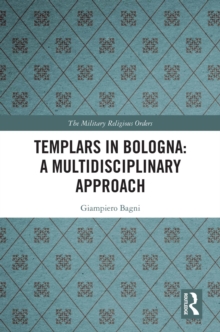
Templars in Bologna: A Multidisciplinary Approach PDF
by Giampiero Bagni
Part of the The Military Religious Orders series
Description
This book is the first to use a multidisciplinary approach to study the Knights' Templars of Bologna, Italy.
Archaeological, scientific, historical and archival sources are combined to consider the Templars in the context of Bologna’s growing economic and political power during this period.
A complete picture of urban and suburban Templar properties in Bologna is provided, detailing lucrative activities such as Templar land use, agricultural innovations and wine production. Because the Crusades were influential in this era and directly impacted the urbanization of the city, the Bolognese Templars are also studied in relation to the five other military orders in Bologna, including the understudied Crucifers and Knights of the Blessed Virgin Mary. Many formerly unexplored historical and archival sources are integrated with scientific data from this project’s archaeological excavations and architectural surveys of the Templar House in Bologna, allowing for its precise dating and the development of an architecturally accurate 3D film reconstruction of this property.
Particular attention is also given to the Order's rise and fall under the ecclesiastical governance of the archbishops of Ravenna, as well as the Templar trial conducted by Archbishop Rinaldo da Concorezzo.
In addition, the biography of the famous Templar brother Peter of Bologna is explored, due to his considerable impact on the events of the Templar trial of 1310.
While many Freemasons believe Peter of Bologna escaped from the Paris trial and went to Scotland in 1313, bringing information crucial to that organization’s founding, the research included here suggests that Peter returned to Bologna instead, serving as a Hospitaller until his death in the city in 1329. This book therefore suggests alternative conclusions regarding Peter of Bologna’s death and legacy, based on the latest available interdisciplinary research.
Information
-
Download - Immediately Available
- Format:PDF
- Pages:236 pages, 4 Tables, black and white; 43 Halftones, color; 43 Illustrations, color
- Publisher:Taylor & Francis Ebooks
- Publication Date:12/03/2024
- Category:
- ISBN:9781003861430
Other Formats
- Hardback from £130.00
- EPUB from £35.09
Information
-
Download - Immediately Available
- Format:PDF
- Pages:236 pages, 4 Tables, black and white; 43 Halftones, color; 43 Illustrations, color
- Publisher:Taylor & Francis Ebooks
- Publication Date:12/03/2024
- Category:
- ISBN:9781003861430










